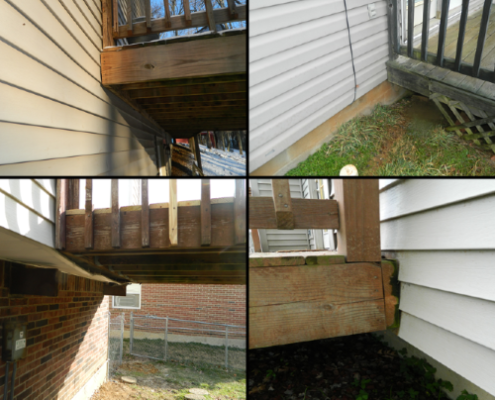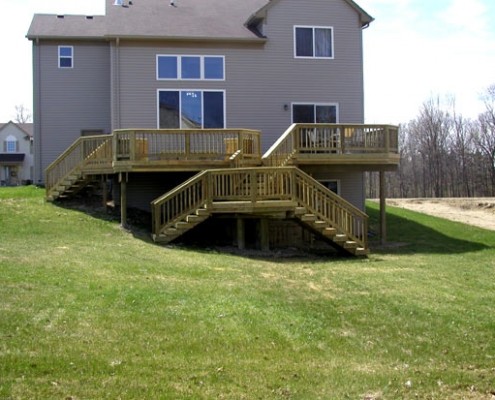Deck Damage: Is your back-yard escape ruining your home?
With spring just around the corner, your neighborhood lumber yard will soon be full of people buying stacks of treated lumber, ready to build a brand new deck. Some are DIY’ers, some are paying a contractor, but from what I can see, they all need a little help.
Remember the viral video of the Indiana deck that collapsed with all those prom kids on it?
Decks collapse and crumble because the people building them think they know what they’re doing. For the most part they do, and scary scenes like the one in Indiana aren’t too common. But a collapse is not the only potentially troubling issue you need to be aware of when building—or using—your deck. An appropriately constructed deck that is not attached to the house properly can cause significant damage—both financially and structurally. And out of the several hundred decks I inspect every year, I have NEVER seen one attached to a sided (wood or vinyl) home correctly. Even on brand-new homes. Never.

The Problem? The Ledger Board.
When people build decks that attach to the house for structural support, they usually neglect to follow an important step, and end up causing moisture damage to the structure of the house.
The board on your deck that is attached to your home is called the ledger board. It is this board that, on every deck I have inspected, is improperly installed/flashed.
If your house has siding, that siding must be cut away and the area must be flashed properly before the ledger board is attached to the house. Neglecting to do this will cause water to migrate into the holes of the bolts that attach the ledger board to the home. The water can also become trapped in between the ledger board and house sheathing. With time, this moisture will cause the house’s rim joists, siding, and floor joists to rot out.
How can I tell if my deck is attached wrong?
Typically, it’s really easy to tell if your ledger board is installed incorrectly. Look at the point where your deck meets your house. If it looks like the entire deck has just been mounted on top of the siding, it’s wrong. This is usually what I see when performing home inspections.
There are other factors that indicate a properly installed deck, but most of them take a trained eye to see. If you think your deck is wrong, have a professional take a look at it. It’s a silent problem that, left un-repaired, could cost you thousands. Below are some examples of what a improperly installed deck looks like.

I can see that it’s wrong, what do I do now?
If you have determined that your deck is not correctly attached, it’s time to get in touch with a real deck contractor to repair the situation. Before you hire someone, ask them how they install ledger boards on siding. This is a great way to see if the contractor really knows his stuff.
When you ask about how he’ll fix it, listen for him to say something like, “We’ll need to cut away the siding where the deck mounts to the house.” If he doesn’t, keep shopping.
Once you have found your knight in shining tool belt, he should be able to determine if your deck can be salvaged. Some can be saved, others must come down. The ledger board is the very first part of the deck that is constructed, and everything else builds from that point. Chances are there won’t be enough room to work without tearing down at least part of the deck.
Keep in mind that if you have an older deck, even if you’ve taken great care of it (such as staining), the damage may already be done to your home. Once the ledger board is taken down and the siding is opened up, you must repair the damage to your home before you rebuild the deck. Leaving any rotten wood will only get worse—and cause more damage—with time.
Below is what we call in the construction world “a detail.” It’s a cutaway diagram on how something should be done. I like to use this image when explaining what this problem is to my clients. It’s also a great way for you to double check your own deck. If you have a siding house with a deck attached to it, it should closely resemble this picture.





I never knew about improperly installed ledger boards until I read your article, it’s really worrying how they can let moisture into your home and damage its inner structures. The deck in my backyard was the construction project of my brother and father which they said they could build on their own. I’m kind of worried that the water damage in my basement could have been caused by an improperly installed ledger board. I’ll take your advice and have a professional deck repair service look at it and remedy it before the issue gets worse. Thank you.